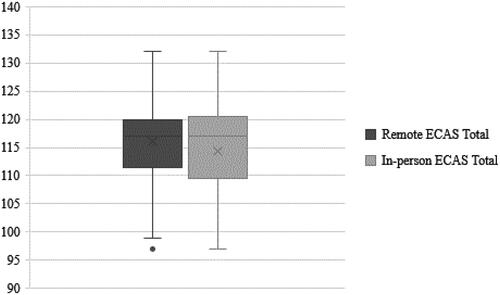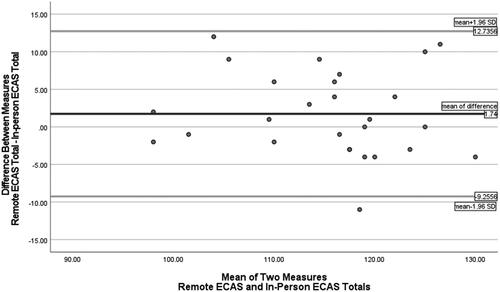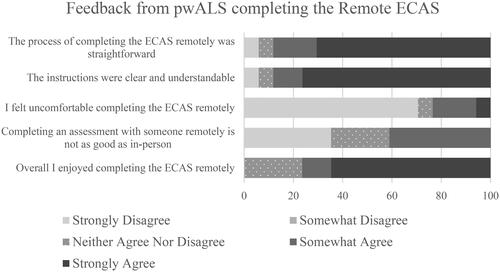Figures & data
Table 1. Participant characteristics of participants with and without ALS.
Figure 1. ECAS total scores (remote and in-person) for the group of people without ALS. X indicates the mean total scores (116.2 for remote and 114.4 for in-person). Standard errors were 1.6 and 1.8 respectively. Whiskers indicate range and the dot is an outlier.

Figure 2. Bland-Altman plot. The x-axis of the plot represents the average of the two measurements, while the y-axis represents the difference between the two measurements. The dark horizontal line is drawn at the mean difference (1.74) to indicate the bias between the two methods. The grey lines are the upper and lower limits of agreement which represent the range within which 95% of the differences between the two methods of measurement are expected to fall.



